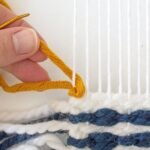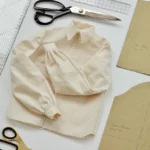Starting out in sewing can be exciting and a bit overwhelming. Whether you’re interested in making your own clothes, home décor, or crafting projects, mastering a few basic techniques can set you on the path to becoming a skilled sewist. Here’s a guide to essential sewing techniques beginners.

Understanding Your Sewing Machine
Before diving into projects, get familiar with your sewing machine:
- Threading the Machine: Learn how to properly thread the upper and lower threads. Consult your machine’s manual for specific instructions.
- Adjusting Tension: Understand how to adjust the thread tension for different fabrics to avoid puckering or loose stitches.
- Choosing Stitches: Familiarize yourself with basic stitches such as straight stitch, zigzag stitch, and backstitch.
Mastering Basic Stitches
Straight Stitch:
- The most common stitch, used for seams and hems.
- Set your machine to a straight stitch and sew along the fabric edge.
Zigzag Stitch:
- Used for finishing raw edges to prevent fraying.
- Ideal for stretch fabrics as it allows the fabric to stretch without breaking the seam.
Backstitch:
- Secures the beginning and end of your seams.
- Sew a few stitches forward, then reverse stitch over them.
Sewing Seams
Straight Seams:
- Sew with a consistent seam allowance (usually 1/4 to 5/8 inch).
- Use a seam guide or the edge of your presser foot to maintain a straight line.
French Seams:
- Used for a clean finish on lightweight fabrics.
- Sew the seam with wrong sides together, trim the edges, then sew again with right sides together, encasing the raw edges.
Flat-Felled Seams:
- Provides a strong, durable seam ideal for jeans and heavy fabrics.
- Sew the seam, trim one side, fold and sew the remaining fabric over the trimmed edge.
Hemming Techniques
Machine Hem:
- Fold the edge of the fabric up to the desired length, press, and sew close to the folded edge.
Hand Hem:
- Use a slip stitch or blind stitch to secure the hem invisibly from the outside.
Blind Hem Stitch:
- Created with a sewing machine’s blind hem foot. Ideal for a nearly invisible hem on garments.
Adding Zippers
Installing a Basic Zipper:
- Sew a zipper with a zipper foot to ensure a close fit. Begin by basting the zipper in place, then sew it in with the machine.
Invisible Zipper:
- Requires a special zipper foot. The zipper is hidden within the seam, providing a clean finish.
Sewing Buttonholes and Buttons
Making Buttonholes:
- Use the buttonhole function on your machine. Mark the placement, sew around the buttonhole, and use a seam ripper to cut it open.
Attaching Buttons:
- Sew buttons onto the fabric using a needle and thread. Use a buttonhole stitch for added security and to prevent the button from shifting.
Understanding Fabric Grain
Straight Grain:
- Runs parallel to the selvage (finished edge of the fabric). Has the most stability and strength.
Cross Grain:
- Runs perpendicular to the selvage. Slightly less stable but can be used for certain garment parts.
Bias Grain:
- Runs diagonally to the selvage. Provides stretch and drape, often used for curved parts and bindings.
Pressing and Ironing
Pressing:
- Use an iron to press seams, darts, and hems as you sew. Pressing helps set stitches and shape the fabric.
Ironing:
- Use an iron to remove wrinkles from completed garments. Always check the fabric care label for the appropriate temperature.
Pattern Cutting and Fabric Layout
Cutting Patterns:
- Use pattern weights or pins to secure patterns on fabric. Cut along the edges with sharp fabric shears or a rotary cutter.
Fabric Layout:
- Arrange your fabric pieces according to the pattern instructions. Pay attention to the grain lines and ensure you cut out all necessary pieces.
Conclusion
Mastering these essential sewing techniques for beginners will give you a solid foundation for your sewing journey. Start with simple projects and gradually challenge yourself with more complex techniques. With practice and patience, you’ll develop the skills needed to create beautiful, well-constructed garments and projects.










